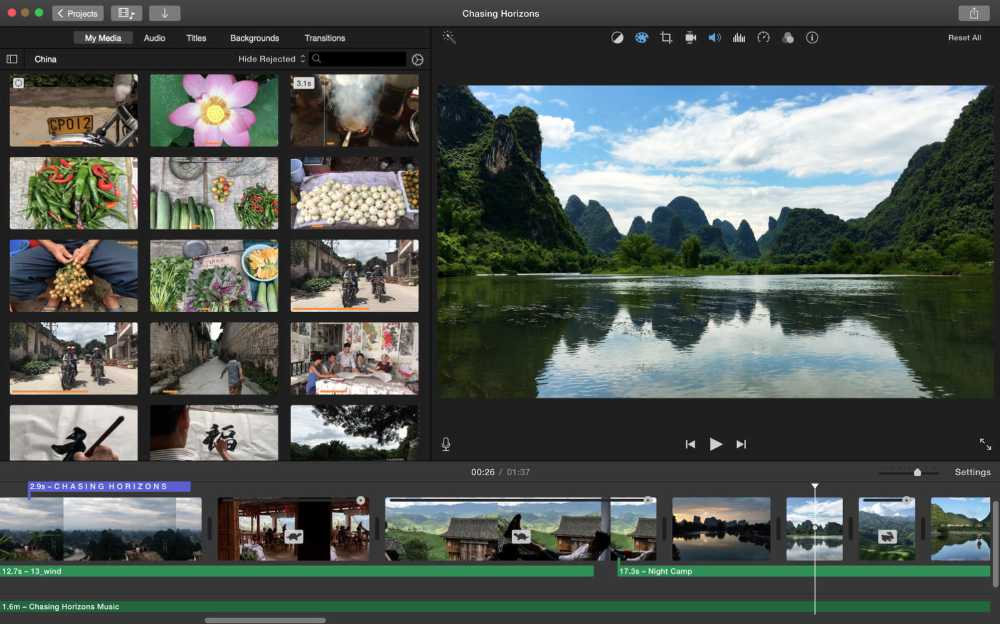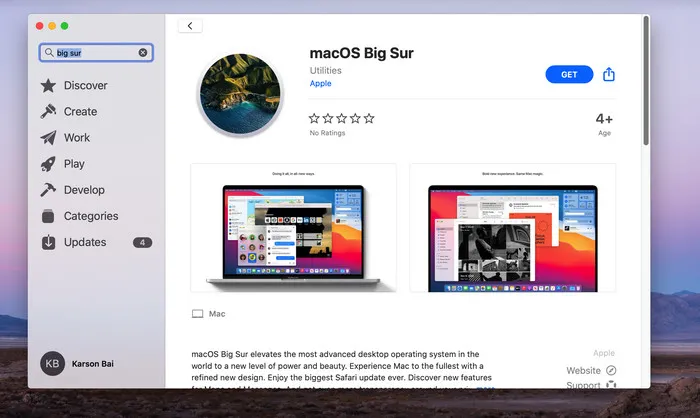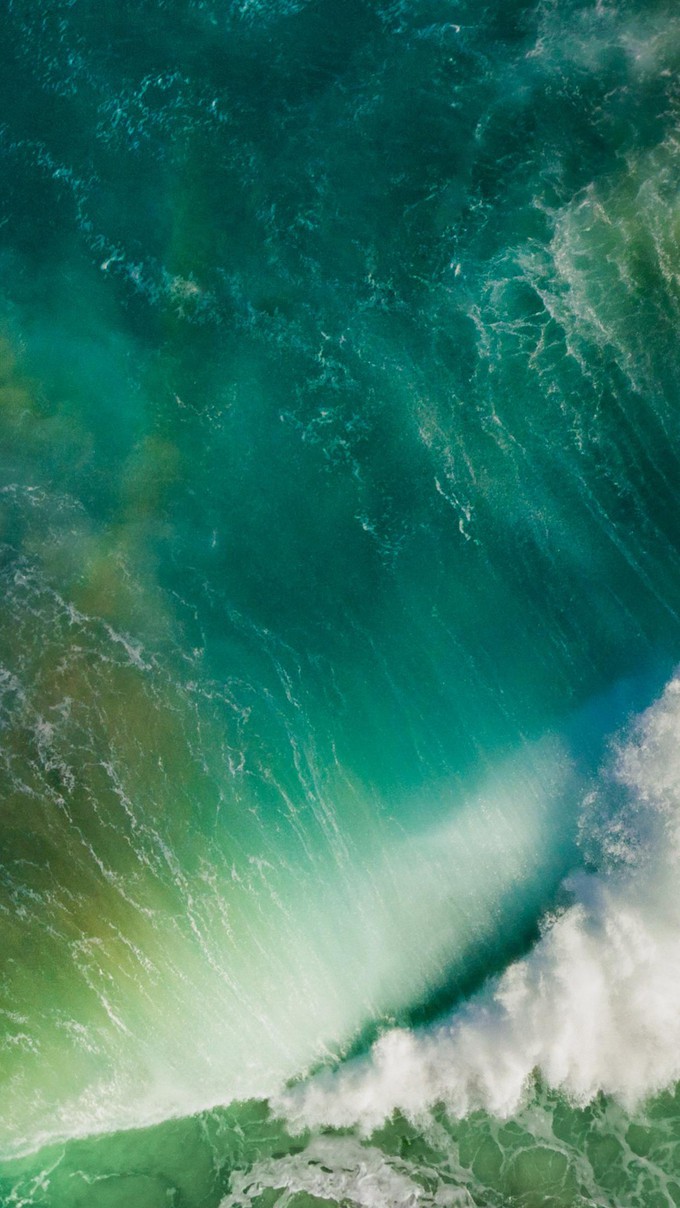As the most revolutionary update to Apple’s operating system in years, the macOS 11 Big Sur is a major milestone in macOS history. And, its release coincides with Apple's newly-launched MacBook.
- Big Sur Mac App Store Login
- App Store
- Mac Update Big Sur
- Mac Os Big Sur Download Ohne App Store
- Mac Os Big Sur App Store
- Your apps will look better than ever on macOS Big Sur, thanks to an all-new interface that’s been finely tuned for the powerful features that make a Mac a Mac. Universal Apps When you open your project in Xcode 12, your app is automatically updated to produce release builds and archives as Universal apps.
- Build and test with the macOS 11 SDK. Update to Xcode 12.2 or later, which includes the macOS 11 SDK, and build your apps to take advantage of the latest advanced technologies in macOS Big Sur. Your apps will look better than ever on macOS Big Sur, thanks to an all-new interface that’s been finely tuned for the powerful features that make a Mac a Mac.
- I know that clover r5123 and Big Sur are both in beta, but I was hoping someone here may have some pointers as to how to fix this. Specifically, when I try to download an app or an update from the App Store, the button to download/update for the app in question turns into the circle with a square in the center, but the download never starts.
macOS Big Sur elevates the most advanced desktop operating system in the world to a new level of power and beauty. Experience Mac to the fullest with a refined new design. Enjoy the biggest Safari update ever. Discover new features for Maps and Messages. And get even more transparency around your privacy.
Check compatibility
macOS Big Sur is compatible with these computers:
MacBook introduced in 2015 or later
MacBook Air introduced in 2013 or later
MacBook Pro introduced in late 2013 or later
Mac mini introduced in 2014 or later
iMac introduced in 2014 or later
iMac Pro
Mac Pro introduced in 2013 or later
View the complete list of compatible computers.
If upgrading from macOS Sierra or later, macOS Big Sur requires 35.5GB of available storage to upgrade. If upgrading from an earlier release, macOS Big Sur requires up to 44.5GB of available storage. To upgrade from OS X Mountain Lion, first upgrade to OS X El Capitan, then upgrade to macOS Big Sur.
Make a backup
Before installing any upgrade, it’s a good idea to back up your Mac. Time Machine makes it simple, and other backup methods are also available. Learn how to back up your Mac.
Get connected
It takes time to download and install macOS, so make sure that you have a reliable Internet connection. If you're using a Mac notebook computer, plug it into AC power.
Big Sur Mac App Store Login
Download macOS Big Sur
If you're using macOS Mojave or later, get macOS Big Sur via Software Update: Choose Apple menu > System Preferences, then click Software Update.
Or use this link to open the macOS Big Sur page on the App Store: Get macOS Big Sur. Then click the Get button or iCloud download icon.

Begin installation
After downloading, the installer opens automatically.
Click Continue and follow the onscreen instructions. You might find it easiest to begin installation in the evening so that it can complete overnight, if needed.
If the installer asks for permission to install a helper tool, enter the administrator name and password that you use to log in to your Mac, then click Add Helper.

Allow installation to complete

Please allow installation to complete without putting your Mac to sleep or closing its lid. Your Mac might restart, show a progress bar, or show a blank screen several times as it installs both macOS and related updates to your Mac firmware.
Stay up to date
After installing macOS Big Sur, you will be notified when updates to macOS Big Sur are available. You can also use Software Update to check for updates: Choose Apple menu > System Preferences, then click Software Update.
Or get macOS Big Sur automatically
If you're using OS X El Capitan v10.11.5 or later and your App Store preferences or Software Update preferences are set to download new updates when available, macOS Big Sur will download conveniently in the background, making it even easier to upgrade. A notification will inform you when macOS Big Sur is ready to be installed. Click Install to get started, or dismiss the notification to install later. When you're ready to install, just open the file named Install macOS Big Sur from your Applications folder.
Learn more
- If the installer shows a list of apps that are not optimized for your Mac, learn about 32-bit app compatibility, then choose whether to proceed with the installation.
- For the strongest security and latest features, upgrade to macOS Big Sur. If you have hardware or software that isn't compatible with Big Sur, you might be able to install an earlier macOS.
- You can also use macOS Recovery to reinstall the macOS you're using now, upgrade to the latest compatible macOS, or install the macOS that came with your Mac.
macOS Big Sur arrived on November 12, 2020, bringing a huge redesign and lots of new features. As with any operating system update, the bugs and issues are unavoidable, and Big Sur is no exception. One of the things that can go wrong when you're updating the macOS is that your Mac can’t install the software because it is not currently available from the software update server. Fortunately, there are things you can do to fix it, and we’ll show you what they are in this article.
Check your internet connection
You should first check your wifi network and an internet connection to make sure those are working properly. Sometimes, the most obvious solutions are the correct ones.
How to update your Mac when it says no update is available
There are several different ways you can upgrade your Mac to Big Sur. One of them is to use the App Store.
- Launch the App Store app on your Mac.
- Search for Big Sur.
- Choose View.
- Click Get.
If Big Sur doesn’t show up in the App Store, here’s how to fix it.
- Choose Uninstaller in the sidebar and click on Apple under Vendors.
- Check the boxes next to Container, Preferences, and Supporting files.
- Press Remove.
- Launch the App Store app and search for Big Sur again.
Delete system junk (and also browser cache)
We’ve touched this point earlier, but here’s a bit more on the issue.
What you see on your Mac’s screen (for example, the Apple we) isn’t always a live page that you see on the internet but rather “cached” content. In other words, you see the past version of that page that is stored locally on your Mac.
When things go wrong, as they always do with modern tech, the first thing that engineers recommend is to clear out the outdated cache files, i.e., the system junk. Sometimes a simple browser refresh will do it, but it’s better to go all the way and clean the entire bulk of junk files.
Try the following steps and see if Big Sur shows up in your updates.
- Install CleanMyMac X, the Mac maintenance tool (a free version can be downloaded here).
- Click on the System Junk tab.
- Review the items and click Clean.
This should clear browser cache and delete a few more gigabytes of cached content from the Library. Don’t worry, these are just temporary files.
Other ways to upgrade to Big Sur
If Big Sur still doesn’t show up in the App Store, there are a couple of other ways you can upgrade. Before you try, it’s worth checking Apple’s system status page to ensure its servers are running properly. To do that, click here.
App Store
- Click on the Apple menu and choose About this Mac.
- Choose Software Update in the Overview tab.
- You should see a message telling you that Big Sur is available.
- Press Update Now and follow the on-screen instructions.
If Software Update doesn’t show you that Big Sur is available or if that update fails, there is another route you can try. You can download it from Apple’s support website. It’s worth noting that the installers on the support website are what are known as combo updaters. They contain all the files necessary to upgrade every Mac. That means the installer file will be larger than the one you download via Software Update because that only contains the files that are necessary to upgrade the model of Mac you’re using. That, in turn, means you need more space on your Mac to upgrade, so it’s even more important to clear out junk files, as we showed you above.
- Go to Apple - Support - Downloads
- Locate the macOS Big Sur installer.
- Click Download.
- When it’s downloaded, if the installation doesn’t start automatically, locate the installer in your Downloads folder and double-click it.
- Follow the instructions on the screen to complete the installation.
Mac Update Big Sur
If all else fails
If none of the above work and you still can’t install Big Sur, you should restart your Mac in Safe mode and try again. Safe mode loads only the files essential for your Mac to run properly. It doesn’t load any unnecessary extensions, launch agents, or login items. So if one of those causes a conflict that prevents your Mac upgrading, it should work in Safe mode.
Mac Os Big Sur Download Ohne App Store
- Shut down your Mac.
- Press the power button and hold down the Shift key.
- When you see the Apple logo, release the Shift key.
Mac Os Big Sur App Store
It can be very frustrating if Big Sur doesn’t show up in Software Update or the App Store. However, there are several things you can do to try and fix it. By following the steps above, you should be able to upgrade to Big Sur. And if you use CleanMyMac X, you’ll have a clean and smoothly-running Mac to install it on.
